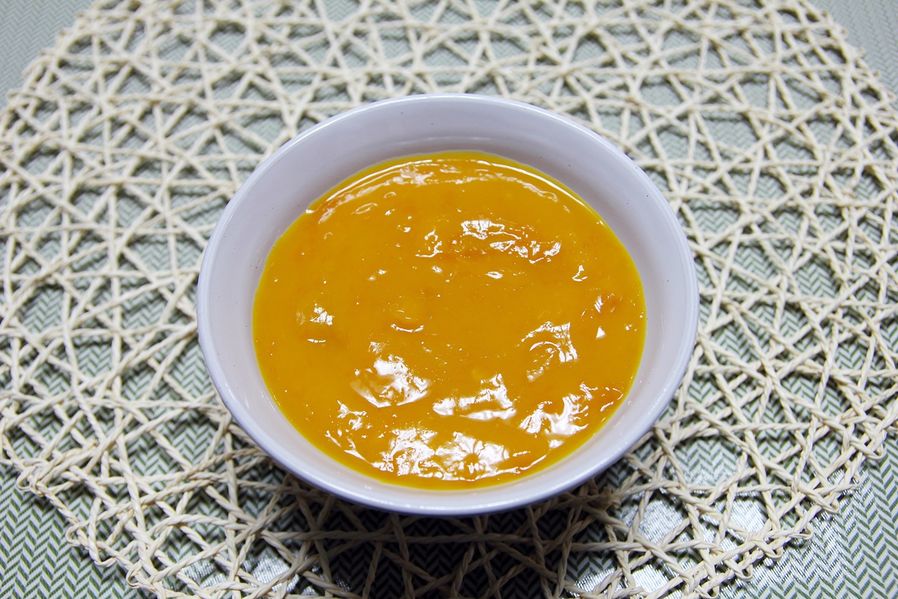1. Ingredients for porridge
- Primary ingredients: Grains like rice or sweet rice
- Secondary ingredients: Sesame, pumpkin, red bean, abalone or beef
2. Taste evaluation (Hobak-juk/Danpat-juk – popular among foreign tourists)
-Spicy: ☆☆☆☆☆
-Salty: ★☆☆☆☆
-Sweet: ★★★★☆
-Sour: ☆☆☆☆☆
3. Introduction to Juk(porridge)
Someorganizations conduct a survey regarding foreigners’ favorite Korean food every year. And Hobak-juk is in top ten most of the time.
Hobak-juk
is pumpkin porridge. Juk(porridge) is made with grains, vegetables,
meat or seafood boiled for a long time.
The
texture and shape looks like soup and it is similar to polenta in
Italy, zhou in China and Jok in Thailand.
I’m
introducing this because foreigners won’t find it foreign as they
can find similar ones in other countries as well.
Korean
foods mostly consist of grains such as rice or barley, the basic form
of dead grains.
In
the Agricultural Age, people used to put water in harvested grains,
add seafood or meat they caught and put fresh vegetables obtained
from the mountain.
Porridge
did not get popular until Goryeo Dynasty era, and there have been
many variations since Joseon Dynasty era that there are around 40
variations recorded on the literature.
Korean people used to eat porridge for a meal but these days it’s a special dish for the babies, old people or patients as well as healthy people.
Porridge
needs the right water-to-grains (rice or sweet rice), which is 6-7 to
1, to be boiled for a long time. And other ingredients could be added
like meat, seafood, vegetables or grains.
The
most popular ingredients are sesame, pumpkin, red beans, abalone and
beef. Pumpkin or red bean porridge tates sweet, which are good for
dessert, and abalone or beef porridge is good as a meal or health
food.
Juk
is boiled for a long time until it reaches a thick consistency and it
gets so soft that you won’t even have to chew it. Because of this
soft texture, it is served for sick people who have weak digestive
function, old people or patients.
Porridge
needs constant stirring, which requires a lot of effort of a cook, to
prevent burning.
So
a warm bowl of porridge reminds me of my childhood when my mother
made porridge whenever I got sick.
Search on Wikipedia
4. Kinds of Juk
Juk
was invented a long time ago so there are many variations since then.
There are almost 40 kinds of Juk in Korea.
I’ll
introduce you a few popular ones among Koreans.
*Hin-juk(white porridge): The most basic porridge made with rice, sweet rice and water with a little bit of salt. Good for patients who are not able to digest food properly or children.
*Hobak-juk(pumpkin
porridge): Ground pumpkin is added to white porridge. It tastes and
smells sweet like pumpkin.
*Danpat-juk(red
bean porridge): Ground red bean is added to white porridge. It’s
popular in winter and tastes sweet.
*Jeonbok-juk(abaloneporridge): Sliced abalones are added to white porridge. The intestines of fresh abalones are also used so that it tastes good and it’s used for health food or meal.
*Sogogi-juk(beef
porridge): Sliced beef is added to white porridge. It’s eaten as
meals.
5. How to enjoy Juk even more
Juk is not too pungent that everybody can enjoy.
It
contains so much water that it makes you full soon enough but it is
digested quickly as well. So I recommend you to eat it for breakfast
or dessert rather than lunch or dinner when you’re active.
Jeonbok-juk(abalone
rice porridge) or Sogogi-juk(beef porridge) is good for breakfast and
Hobak-juk or Danpat-juk(red-bean porridge) is good for dessert.
EspeciallyHobak-juk and Danpat-juk is popular among foreigners for its sweet flavor and unique taste.
You’ll find a few proper restaurants in any downtown.
You
can also find some fast food porridge products from the market or
convenience store that you can heat it up before you eat it.
It’s
even served in the soup section at the hotel for breakfast.
Youwill easily find it anywhere so I want you to try Korean style breakfast once.

Canon EOS 550D | f/4.0 | iso 800 | 2013:02:10 19:26:44 | Flash did not fire, compulsory flash mode | 32mm











